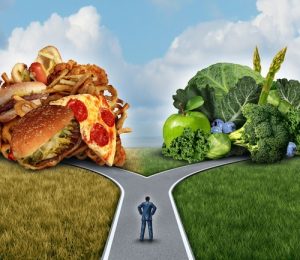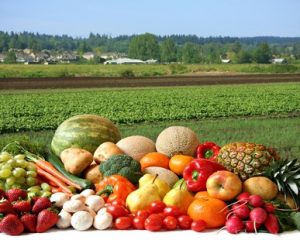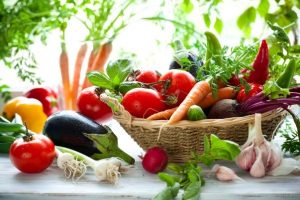What Do The US Dietary Guidelines Say About Your Diet?
Author: Dr. Stephen Chaney
 Science is always changing, and nutritional science is no different. As we learn more, our concept of the “ideal diet” is constantly evolving. Because of that, the USDA and the US Department of Health & Human Services produce a new set of Dietary Guidelines for Americans every 5 years.
Science is always changing, and nutritional science is no different. As we learn more, our concept of the “ideal diet” is constantly evolving. Because of that, the USDA and the US Department of Health & Human Services produce a new set of Dietary Guidelines for Americans every 5 years.
The 2020-2025 Dietary Guidelines for Americans have just been released. As usual, the process started with a panel of 20 internationally recognized scientists who produced a comprehensive report on the current state of nutritional science and made recommendations for updated dietary guidelines. After a period of public comment, the dietary guidelines were published.
There were two new features of the 2020-2025 Guidelines:
- They provided dietary guidelines for every life stage from 6 months of life to adults over 60.
- The guidelines also addressed personal preferences, cultural traditions, and budgetary concerns in so that each of us can develop a healthy diet that fits our lifestyle.
What Do The US Dietary Guidelines Say About Your Diet?
Here are the 2020-2025 Guidelines in a nutshell:
- Follow a healthy dietary pattern at every life stage.
- Customize and enjoy nutrient-dense food and beverage choices to reflect personal preferences, cultural traditions, and budgetary considerations.
- Focus on meeting food group needs with nutrient-dense foods and beverages and stay within calorie limits. They went on to say, “A healthy dietary pattern consists of nutrient-dense forms of foods and beverages across all food groups [emphasis mine], in recommended amounts, and within calorie limits.”
They said, “the core elements that make up a healthy dietary pattern include:”
-
- Vegetables of all types – dark green, red, and orange vegetables; beans, peas, and lentils; starchy vegetables; and other vegetables.
-
- Fruits – especially whole fruits.
-
- Grains – at least half of which are whole.
-
- Dairy – including fat-free or low-fat milk, yogurt, and cheese; lactose-free versions; and fortified soy beverages and soy yogurt as alternatives. [Other plant-based milk and yogurt foods were not recommended because they do not provide as much protein as dairy. So, they were not considered equivalent foods.]
-
- Protein foods – including lean meats, poultry, and eggs; seafood; beans, peas, and lentils; and nuts, seeds, and soy products.
-
- Oils – including vegetable oils and oils in food, such as seafood and nuts.
- Limit foods and beverages higher in added sugars, saturated fat, and sodium; and limit
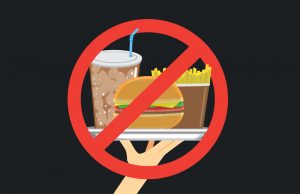 alcoholic beverages. Their specific recommendations are:
alcoholic beverages. Their specific recommendations are:
-
- Added sugars – less than 10% of calories/day starting at age 2. Avoid foods and beverages with added sugars for those younger than 2.
-
- Saturated fat – Less than 10% of calories starting at age 2.
-
- Sodium – Less than 2,300 mg per day – even less for children younger than 14.
-
- Alcoholic beverages – Adults of legal drinking age can choose not to drink, or to drink in moderation by limiting intake to 2 drinks or less in a day for men and 1 drink or less in a day for women, when alcohol is consumed. Drinking less is better for health than drinking more. There are some adults who should not drink alcohol, such as women who are pregnant.
For more details, read the 2020-2025 Dietary Guidelines for Americans.
The Dark Side Of The US Dietary Guidelines
 The US Dietary Guidelines point Americans in the right direction, but they are never as strong as most nutrition experts would like. The 2025 Dietary Guidelines are no exception. They have two major limitations:
The US Dietary Guidelines point Americans in the right direction, but they are never as strong as most nutrition experts would like. The 2025 Dietary Guidelines are no exception. They have two major limitations:
#1: The food industry has watered down the guidelines. This happens every time a new set of guidelines are released. The food and beverage lobbies provide their input during the public comment period. And because they fund a significant portion of USDA research, their input carries a lot of weight. Here are the 3 places where they altered the recommendations of the scientific panel:
- The scientific panel recommended that Americans decrease the intake of added sugar from 13% of daily calories to 6%. The final dietary guidelines recommended reducing sugar to 10% of daily calories.
- The scientific panel recommended that both men and women limit alcoholic drinks to one a day. The final dietary guidelines recommended men limit alcoholic drinks to two a day.
- The scientific panel included these statements in their report:
-
- “Dietary patterns characterized by higher intake of red and processed meats, sugar-sweetened foods and beverages, and refined grains are…associated with detrimental health outcomes.”
-
- “Replacing processed or high fat-meats…with seafood could help lower intake of saturated fat and sodium, nutrients that are often consumed in excess of recommended limits.”
-
- “Replacing processed or high-fat meats with beans, peas, and lentils would have similar benefits.”
These statements are included in the final report, but they are buried in portions of the report that most people are unlikely to read. The summary that most people will read recommends shifts in protein consumption to “add variety” to the diet.
#2: The guidelines do not address sustainability and do not explicitly promote a shift to more  plant-based diets. Again, this was based on input from food lobby groups who argued that sustainability has nothing to do with nutrition.
plant-based diets. Again, this was based on input from food lobby groups who argued that sustainability has nothing to do with nutrition.
If you are concerned about climate change and the degradation of our environment caused by our current farming practices, this is a significant omission.
I have covered this topic in a recent issue of “Health Tips From the Professor”. Here is a brief summary:
- In 2019 a panel of international scientists was asked to conduct a comprehensive study on our diet and its effect on both our health and our environment.
- The scientific panel carefully evaluated diet and food production methods and asked three questions:
-
- Are they good for us?
- Are they good for the planet?
- Are they sustainable? Will they be able to meet the needs of the projected population of 10 billion people in 2050 without degrading our environment.
- They developed dietary recommendations popularly known as the “Planetary Diet”. Here are the characteristics of the planetary diet.
-
- It starts with a vegetarian diet. Vegetables, fruits, beans, nuts, soy foods, and whole grains are the foundation of the diet.
-
- It allows the option of adding one serving of dairy a day.
-
- It allows the option of adding one 3 oz serving of fish or poultry or one egg per day.
-
- It allows the option of swapping seafood, poultry, or egg for a 3 oz serving of red meat no more than once a week. If you want a 12 oz steak, that would be no more than once a month.
Unless you are a vegan, this diet is much more restrictive than you are used to. However, if you, like so many Americans believe that climate change is an existential threat, I would draw your attention to one of the concluding statements from the panel’s report.
- “Reaching the Paris Agreement of limiting global warming…is not possible by only decarbonizing the global energy systems. Transformation to healthy diets from sustainable food systems is essential to achieving the Paris Agreement.”
In other words, we can do everything else right, but if we fail to change our diet, we cannot avoid catastrophic global warming.
What Do The US Dietary Guidelines Say About Supplementation?
 The authors of the 2020-2025 US Dietary Guidelines have relatively little to say about supplementation. However:
The authors of the 2020-2025 US Dietary Guidelines have relatively little to say about supplementation. However:
- They list nutrients that are of “public health concern” for each age group. Nutrients of public health concern are nutrients that:
-
- Are underconsumed in the American diet.
-
- Are associated with health concerns when their intake is low.
- They state that “dietary supplements may be useful in providing one or more nutrients that otherwise might be consumed in less than recommended amounts.”
- They recommend specific supplements for several age groups.
Here are their nutrients of public health concern and recommended supplements for each age group:
#1: General population.
- Nutrients of public health concern are calcium, dietary fiber, and vitamin D. They state that supplementation may be useful for meeting these needs.
#2: Breast Fed Infants.
- Supplementation with 400 IU/day of vitamin D is recommended shortly after birth.
#3: Vegetarian Toddlers.
- Iron and vitamin B12 are nutrients of concern.
#4: Children & Adolescents.
- Calcium and vitamin D are nutrients of concern. Dairy and/or fortified soy alternatives are recommended to help meet these needs.
- Iron, folate, vitamin B6, vitamin B12, and magnesium are also nutrients of concern for adolescent females.
#5: Adults (Ages 19-59).
- 30% of men and 60% of women do not consume enough calcium and 90% of both men and women do not get enough vitamin D.
#6: Pregnant & Lactating Women:
- Calcium, vitamin D, and fiber are nutrients of concern for all women in this age group.
- In addition, women who are pregnant have special needs for folate/folic acid, iron, iodine, and vitamin D.
- Women who are pregnant or thinking of becoming pregnant should take a daily prenatal vitamin and mineral supplement to meet folate/folic acid, iron, iodine, and vitamin D needs during pregnancy. They go on to say that many prenatal supplements do not contain iodine, so it is important to read the label.
- All women who are planning or capable of pregnancy should take a daily supplement containing 400 to 800 mcg of folic acid.
#7: Older Adults (≥ 60).
- Nutrients of concern for this age group include calcium, vitamin D, fiber, protein, and vitamin B12.
- About 50% of women and 30% of men in this age group do not get enough protein in their diet.
My Perspective:
The US Dietary Guidelines use foods of public health concern as the only basis for recommending 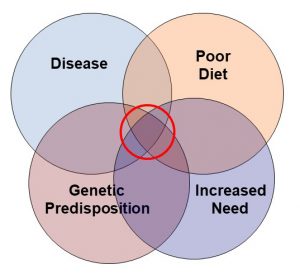 supplementation. I prefer a more holistic approach that includes increased needs, genetic predisposition, and preexisting diseases as part of the equation (see the diagram on the right). I have discussed this concept in depth in a previous issue of “Health Tips From The Professor”.
supplementation. I prefer a more holistic approach that includes increased needs, genetic predisposition, and preexisting diseases as part of the equation (see the diagram on the right). I have discussed this concept in depth in a previous issue of “Health Tips From The Professor”.
I have also taken this concept and made supplement recommendations for various health goals in a free eBook called “Your Design For Healthy Living”.
Some people may feel I should have included more supplements in my recommendations. Others may feel I should have included fewer supplements in my recommendations. No list pf recommend supplements is perfect, but I have tried to include those supplements supported by good scientific evidence in my recommendations.
The Bottom Line
The USDA and Department of Health & Human Services have just released the 2020-2025 US Dietary Guideline. In the article above I have summarized:
- Their recommendations for a healthy diet.
- Their recommendations for supplementation.
- The dark side of the US Dietary Guidelines.
For more details, read the article above.
These statements have not been evaluated by the Food and Drug Administration. This information is not intended to diagnose, treat, cure, or prevent any disease.



